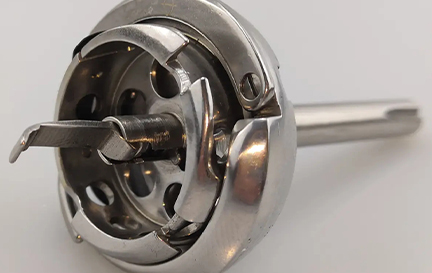leather upholstery sewing machine
Understanding Leather Upholstery Sewing Machines
Leather upholstery sewing machines are specially designed tools that cater to the unique needs of working with leather materials. As the demand for leather products continues to rise, particularly in the furniture, automotive, and fashion industries, equipping oneself with the right machinery becomes essential for effective and high-quality production. This article explores the intricacies of leather upholstery sewing machines, their features, and factors to consider when choosing one.
The Importance of Specialized Machines
Unlike standard sewing machines, leather upholstery sewing machines are built to handle the thickness and durability of leather. Regular machines often struggle with heavy materials, leading to uneven stitches, broken needles, or damaged fabric. Specialized machines come with robust features such as stronger motors, larger needles, and feed mechanisms designed to handle multiple layers of leather. This ensures the reliability and longevity of stitching, vital for products subjected to daily use.
Key Features of Leather Upholstery Sewing Machines
1. Heavy-Duty Construction These machines are built to withstand the demands of sewing leather. The robust frames are designed to absorb vibrations, which enhances stitching precision.
2. Walking Foot Mechanism A walking foot is commonly featured in leather sewing machines, allowing for better feeding of the material. This mechanism helps in moving the leather evenly through the machine, preventing slipping and ensuring that even thick layers are stitched consistently.
3. Needle Type and Size Leather requires special needles, typically wedge-shaped, to penetrate the material without causing damage. These machines usually come with a variety of needle sizes tailored for different leather thicknesses.
4. High-Quality Stitching Options Leather upholstery machines often provide different stitching styles and tensions. The ability to adjust stitch length and tension is crucial when working with various types of leather to achieve the desired aesthetic and durability.
5. Industrial Capability Many leather sewing machines are designed for industrial use, providing higher speeds and capabilities for mass production. This feature is essential for businesses that handle large volumes of leather goods.
leather upholstery sewing machine

Choosing the Right Machine
When selecting a leather upholstery sewing machine, several factors should be considered to ensure that it meets your specific needs
1. Project Type Determine what types of leather goods you plan to create. For simple projects, a basic machine may suffice, while commercial manufacturers may require heavy-duty, industrial sewing machines for complex designs.
2. Budget Leather sewing machines can vary significantly in price. It's crucial to establish a budget and research machines that provide the best value for your investment.
3. Brand Reputation Consider purchasing from brands known for their quality and reliability in the sewing industry. Reading reviews and testimonials can provide insights into the machine’s performance and customer support.
4. Ease of Use Some machines have a steeper learning curve than others. If you are a beginner, it might be wise to choose a more user-friendly model until you gain more experience.
5. Support and Warranty Ensure that the machine comes with a solid warranty and reliable customer support. This is particularly important for industrial machines which may require maintenance and repairs.
Conclusion
Leather upholstery sewing machines play a pivotal role in the production of high-quality leather goods. By understanding their features and functions, one can make informed decisions when selecting the right machine for their needs. Whether you are a hobbyist looking to create unique leather items or a business aiming for mass production, investing in a good-quality leather sewing machine is essential for achieving satisfactory results. With the right tools at hand, the possibilities for creativity and craftsmanship are virtually limitless.
-
Boost Production Efficiency with a Pattern Sewing MachineNewsAug.29,2025
-
Industrial Excellence with the Best Heavy Duty Sewing MachineNewsAug.29,2025
-
Precision and Power with the Best Pattern Sewing MachineNewsAug.29,2025
-
Reliable Bulk Packaging Starts With the Right FIBC Sewing MachineNewsAug.29,2025
-
Advanced Packaging Solutions: Elevate Productivity with Jumbo Bag Sewing Machine and Industrial Stitching EquipmentNewsAug.29,2025
-
High-Performance Solutions for Bulk Packaging: FIBC Sewing Machine and MoreNewsAug.29,2025
-
Maximize Efficiency with an Industrial Cylinder Arm Sewing MachineNewsAug.28,2025


























